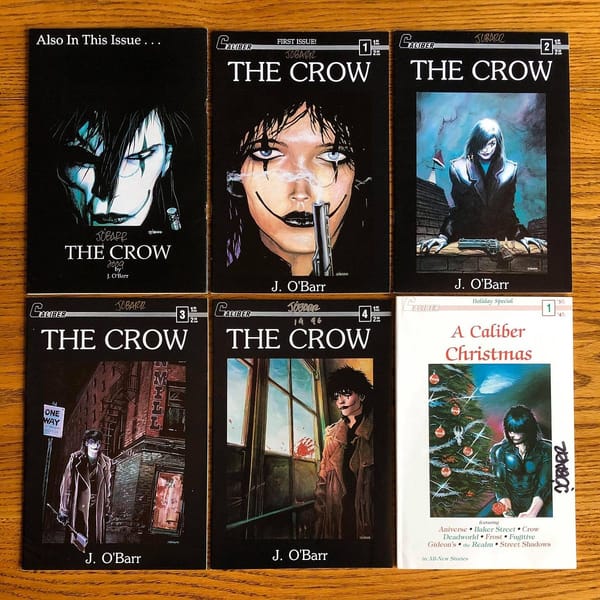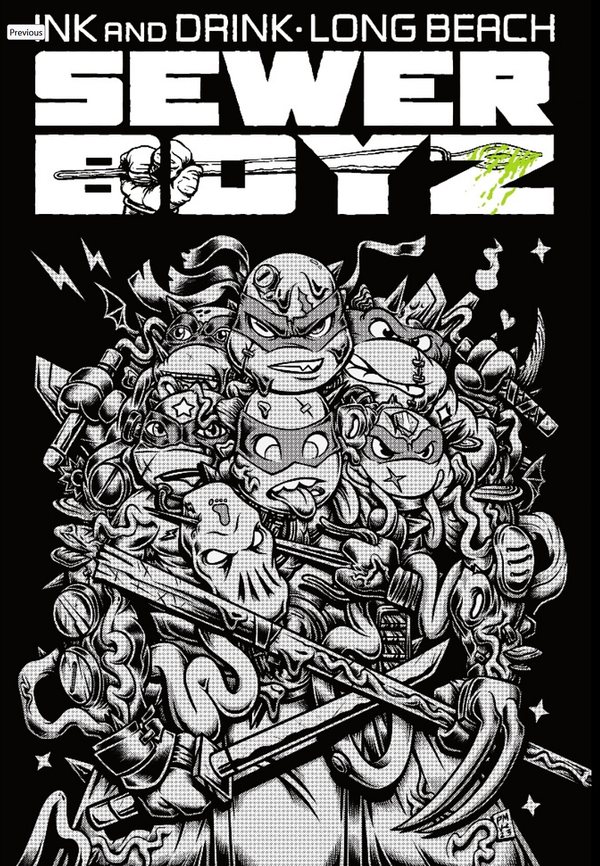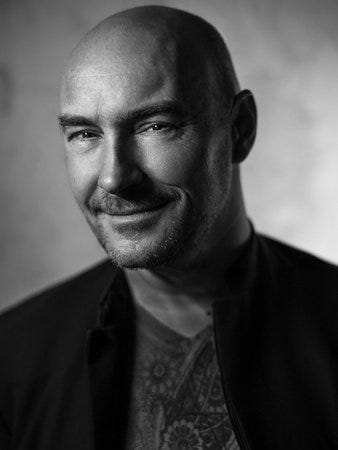Life after Faust: David Quinn talks The Addiction and bao buns
Interview with Faust: Love of the Damned co-creator David Quinn about his first new comics work in more than a decade: The Addiction.
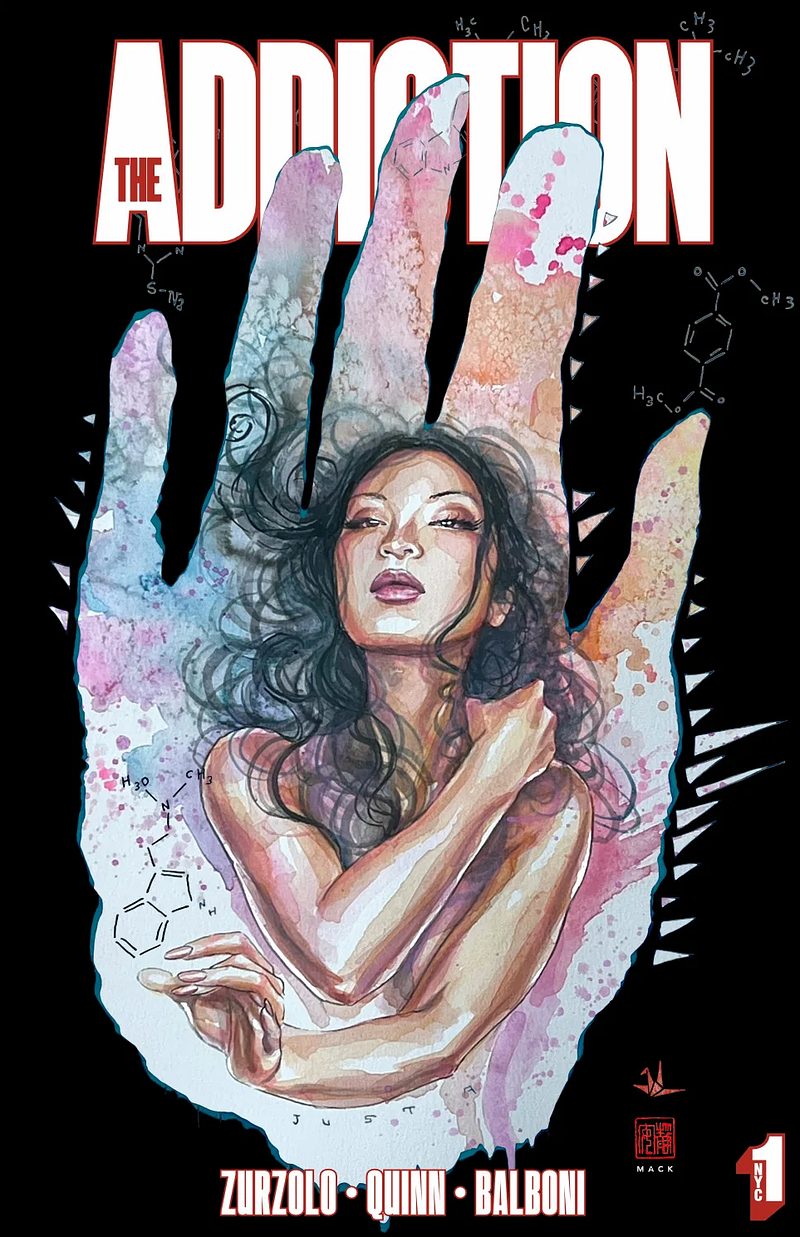
Faust: Love of the Damned co-creator David Quinn is back this July with The Addiction, his first new comics work published since the final issue of Faust in 2012. Quinn is joined for this crime/horror/superhero/food series by co-creator/co-writer Vincent Zurzolo (co-owner of Metropolis Collectibles) and Claudia Balboni (known for Killer Queens from Dark Horse).
The Addiction follows Dr. Niki Tino, who has the power to drug anyone with a touch. Drug them with what? Anything she wants, apparently, from morphine to aspirin. She tries to use her power for good and to fight addiction, but a lot of people want to get ahold of her blood to use it to turn a profit.
If you were looking for Faust 2, this isn’t it. As far as I’m concerned that’s a good thing. If you liked Faust, there are still things I think you’ll like about this. And if you didn’t like Faust, or stayed clear of it because its reputation for extreme gore and violent sex, you might find The Addiction more inviting.
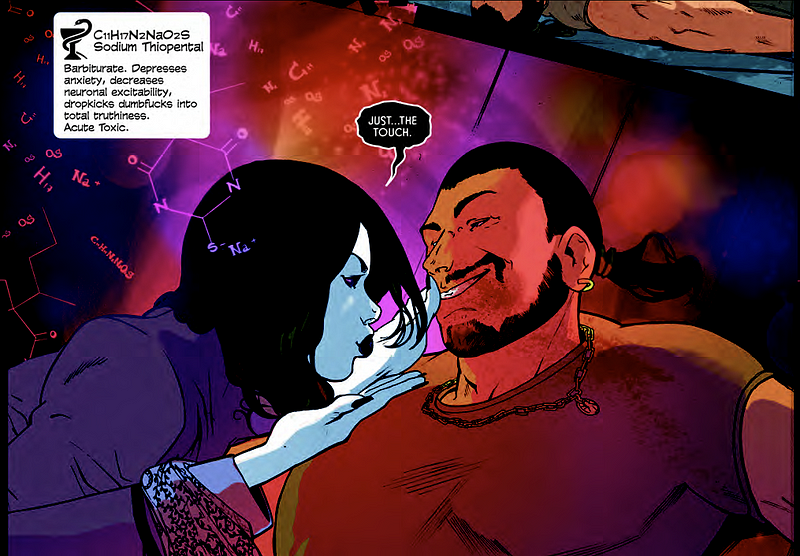
The first issue begins straight-forwardly enough, with Niki escaping from a Cartel in Mexico. So far, so Sicario. But by the end the action dissolves into Quinn-esque fever dream madness. But the second issue is where things really take turn with the introduction of a pair of candy-themed villains that feel like they might be a hallucination. The heart of the book, however, is Niki’s relationship with her boyfriend Enzo, and their shared relationship to food.
If this sounds like your thing, you can also check out previews for the first two issues on The Addiction website. Your local comic shop should be doing pre-orders for the first issue, self-published by the creators, now.
Now, without further ado, let’s catch-up with Quinn about The Addiction, what he’s been up to since Faust, and food.
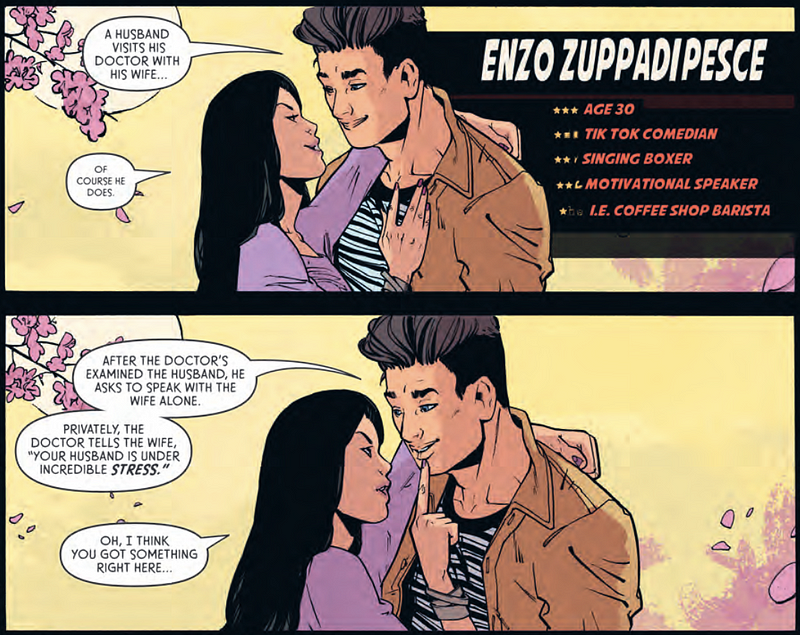
Sewer Mutant: I think this is your first new comic book work since the end of Faust: Love of the Damned is that right? And you haven’t really been all that active in comics, apart from those final issues of Faust, since 2001 when you were still doing stuff for Avatar and Top Cow. What have you been doing since?
Quinn: I scripted two or three books a month at times during the 1990s, but market forces post-boom, post-Marvel bankruptcy, post-distributor-wars convinced me to change my game radically. One week I was in talks with two publishers about going exclusive as a writer, then next I turned in all my work for hire assignments and started declining any offers — I went exclusive with myself, working only on IP I owned or co-owned. How did I survive? I freelanced full time for banks and insurance companies, creating branded content across all media, basically telling their employees and customers the stories that perpetuated their brands. Since my wife was also working in finance as a sales executive we saved our money, set ourselves up to take good care of our daughter, and, before long, retired from serving corporate clients to focus entirely on creativity and family.
Of course there were those that thought I was dead when my credits disappeared from monthly comics racks. But I published a crazy “Not For Children Children’s Book” called The Littlest Bitch which is still a surprise hit on convention tables and a legit children’s book Go To Sleep, Little Creep (Penguin/Random House) that’s become an evergreen seller at Halloween — it’s about the classic monster parents putting the little monsters to bed. I started serializing a novel WIP 99 Songs I Wanna Hear At My Wake on my blog. I wrote and pitched a few graphic novels for young readers which I am still trying to sell. I worked on TV pitch Bibles for both Faust and Nightvision, partnering with Matteo Pizzolo of Black Mask Studios to bring these and my other properties to media. And I kept scripting my own quirky comics, some of which are slowly coming close to market. Of course, all the while Tim and I kept collaborating. We worked on two Faust spinoff concepts, but still have not settled on the right one. We put out a DIY sketchbook with monologues and illustrations — the plan was to sell it at conventions, but we printed it during the plague years. Twelve years after I first started trying to make a deal, we published three versions of the complete Faust.
Sewer Mutant: How did The Addiction project come together? Why come back to comics now?
Quinn: Vincent Zurzolo and I have been friends since my earliest days in comics — since we are both independent entrepreneurs, self-taught in our disciplines, a writer-producer and a world class salesperson / advocate for comic arts, working together was a natural.
The seed of The Addiction was all Vincent, but he knew he had to find a partner that would help him transform a great high concept — a person with the power to drug you with a touch — into a story, a series of stories, a world, a universe. Initially, we talked about bringing me on work for hire, but once we started collaborating, we enjoyed exploring and developing the ideas, characters and conflicts so much, both of us felt we should make it a partnership.
Why now? Well, like Faust and Nightvision, the story of Dr. Niki Tino makes for good comics, but it is easy to imagine it translating to other media — we’re creating pitches for TV and film — and as I mentioned earlier, I have a very 360 degree approach to anything I work on now.
It’s also refreshing, in a genre where heroes clash with cosmic conflicts, to dramatize something so down to Earth — fighting the slavery of one of our biggest health problems today: addiction.
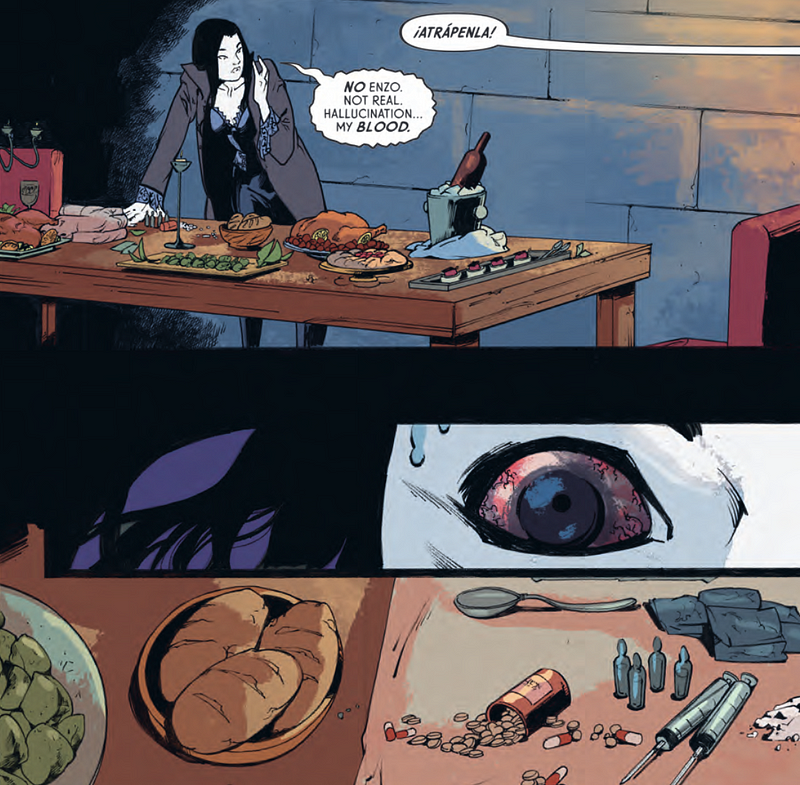
Sewer Mutant: How are the writing chores split up? The hallucinatory sequence at the end of issue 1 seemed very “Quinn” to me.
Quinn: Oh, I know what you mean, it’s true, I am always interested in internal conflicts and shifts of perception. Both Vincent and I come to our conversation with unlimited ideas, and as we brainstorm, we streamline a tide of “What ifs” into something a little more controlled — a story. Then I basically create a script, continuing to make choices about what we will show, what we will say, to have an impact on a reader. Then we both step in as editors and pick that script apart to elevate it, hopefully to its most effective.
Collaboration and creativity ARE the fun parts, as you know — the business and production is mostly chasing people to do what they said they would do. But the collaboration conversation is alchemy — creating something from nothing. We both try to be generous listeners in the back and forth. If something is important to one or the other of us, we’re heard. This is not always the case in comics, so I know we are fortunate to be a team joined with Eisner-nominated illustrator Claudia (Killer Queens) Balboni, color artist Brad Simpson, letterer Dave Sharpe and a legion of fan favorite cover artists including Artgerm, David Mack, Alitha Martinez, Amanda Conner, Ryan Brown, and rising star Andres Labrada.
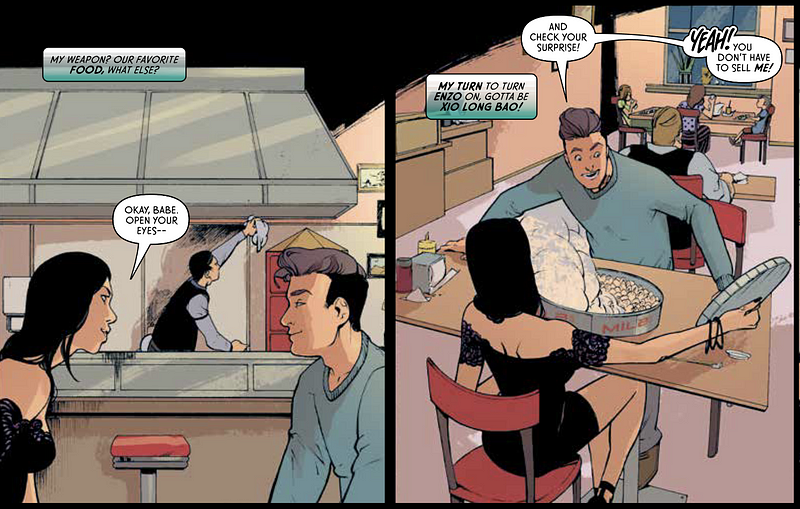
Sewer Mutant: Food is a big theme in the book. It’s at the center of Niki and Enzo’s relationship. Niki has a ravenous appetite. The villains from the second issue are candy themed. Was this something you and Vincent decided on consciously when you started out, or did it emerge organically while writing?
Quinn: Consciously, to be sure, but almost inevitably in our cases, I think. This question feeds mind, body and spirit for me, so I love that you ask it, and I think Vincent and our whole collaborative team would say the same.
First, The Addiction is an American Story, and let’s face it, our story of food tells you so much about the history of America’s audacious experiment, a nation of castaways from older cultures mixed into create something new and aspiring to democracy. I think that’s why so many of us are obsessed with food, and so many of us understand our own culture through food.
And speaking of obsession — in order to tell a serious and relatable story about fighting addiction, I think you have to examine the razor thin line between an obsession or a compulsion— say, serious interest in food and wine, fascination with mind-altering substances, a hearty sexual appetite, a religious mania, or simply collecting comic books or cars or gambling enthusiastically — and an addiction, where we lose control of our lives. So absolutely every character in this book is driven obsession…. some will cross over to addiction. That’s by design. If you don’t see it in the first book, or the preview of the second issue that we have on our web site, than we just haven’t dramatized it fully yet.
Personally, both Vincent and I formed families commingling European and Asian heritage. Niki is a first generation, adopted Chinese/Italian American, Enzo’s a second generation Italian American. These are the people I have lived with here in New York, and believe me, they live through their food, they find their place in life through their shared meals. (And obviously, they are not alone in that.) There is a reason my Chinese friends and family don’t ask, “How are you,” when they meet, instead, they ask “Have you eaten yet?”
Long story short — food is a big one. It’s history, it’s character, it’s identity, it’s relationship.
One of my happiest moments writing was the scene coming up in book two — the two soup dumpling scenes that bookend that chaper. I was amused to ask Claudia Balboni, our amazing artist, have you ever wanted to draw a scene where a smart, sexy woman seduces her lover with food? Claudia symphonized that one, even designing the soup dumpling seduction action in a sexy golden spiral of pleasure and passion, ala Fibonacci. (Once you see that you can’t unsee it.)
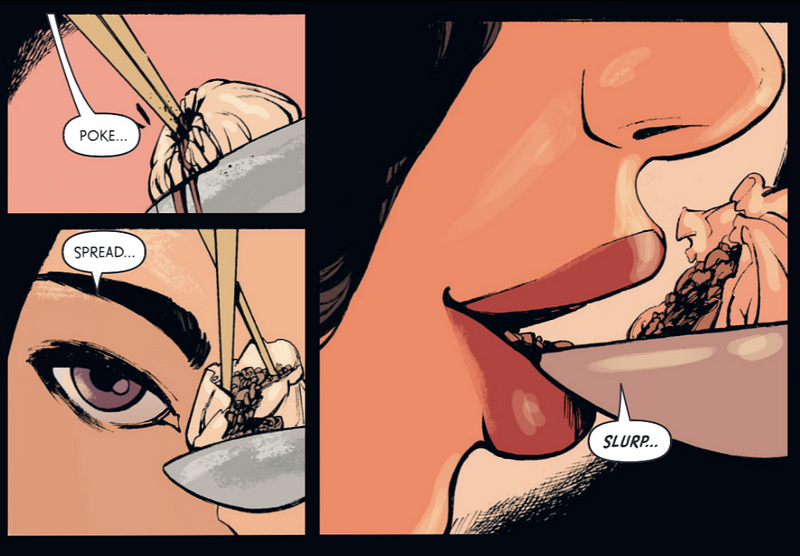
And what’s your favorite dish?
Everyone in my family loves my Balsamic glazed chicken, but I can’t get enough garlic roasted broccoli or grilled octopus either. My wife love to cook together, and I know my daughter, born in China, wants my grilled filet or her mother’s home-made bao buns when she’s home from college. So I will answer: xiao long bao, SOUP DUMPLINGS!
Sewer Mutant: What are your plans for the series? Is it a mini-series or an ongoing?
Quinn: We’ve finished the first three issue mini-series, have a plot synopsis for the second series, and a very fun offbeat one shot “special” concept — so look for a sequence of mini-series and specials.
Sewer Mutant: What’s next for you? Any chance we’ll see Nightvision reprinted now that the Faust collection is done? Or some The Addiction spin-offs?
Quinn: I’ve assembled the pages for a Nightvision omnibus. I’m preparing some very cool covers with the artists you would expect to play along. And Tim [Vigil] and I are working on a project right now that is 100 percent true to our core…. But not at all what you would expect from us at the same time. Anyone out there who likes our stuff, please keep following The Addiction online and follow my blog or Tim’s Patreon, and you will know when our next projects — both old and new — threaten to hit crowdfunders and comic shops.

